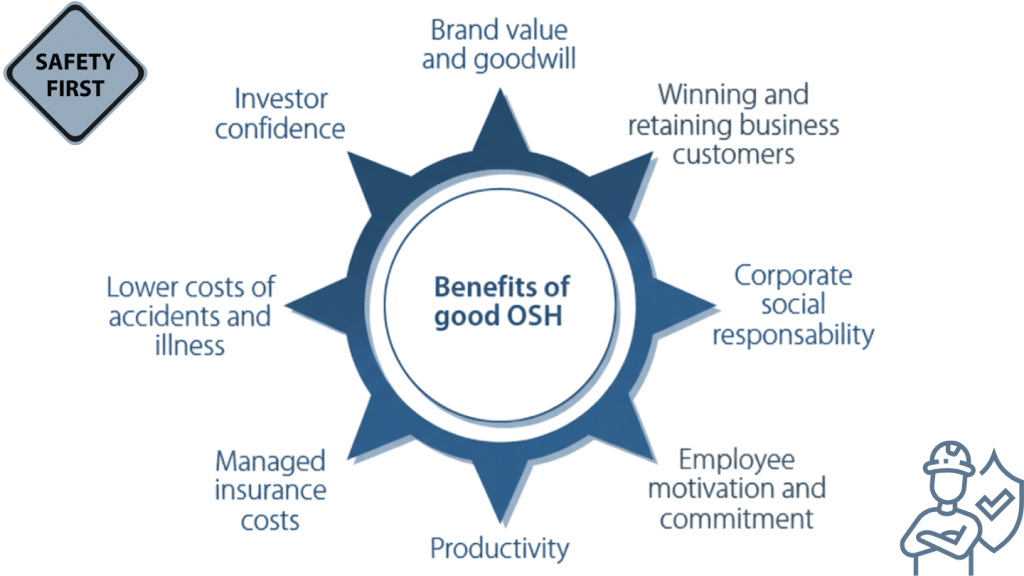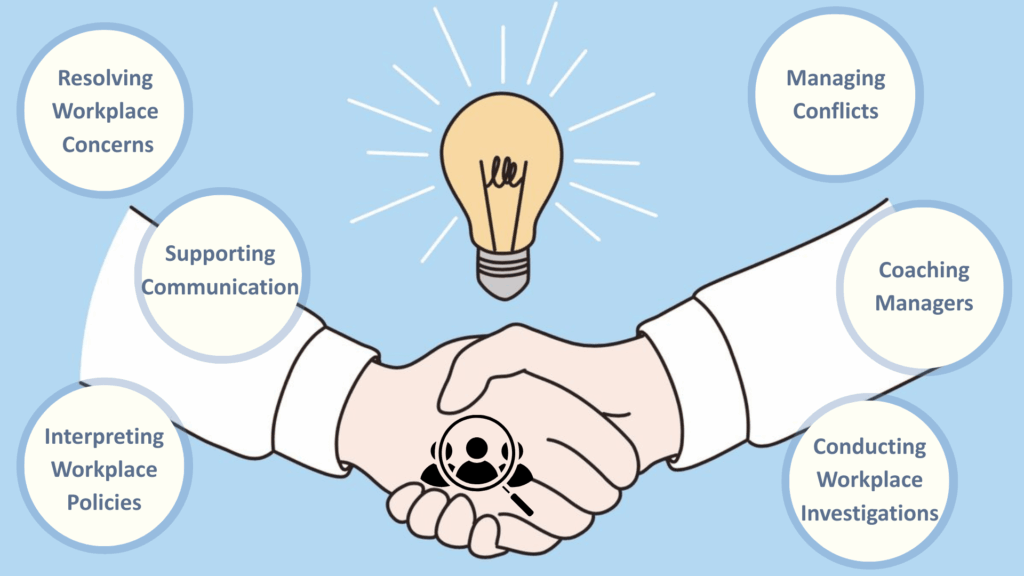Getting hurt at work shouldn’t be part of your job.
Yet every day, 15 workers lose their lives on the job in America.
That’s a stark drop from 38 deaths per day in 1970, but still represents thousands of families affected by workplace tragedies.
This dramatic improvement shows what’s possible when organizations take safety seriously.
Every worker deserves a safe workplace, and making safety a priority isn’t just about reducing risks
This will cover the basics of workplace safety, why it matters for your business, and how to build a culture that keeps everyone safe.
Why Is Safety Important in the Workplace?
Safe workplaces save lives and make business sense.
According to the Bureau of Labor Statistics, there were 5,283 workplace deaths in 2023.
That’s 3.5 deaths for every 100,000 workers.
Every effective safety program aims for core goals that help protect workers and improve overall workplace safety.
1. Prevent Injuries Before They Happen
Safety programs focus on prevention through hazard identification, proper training, and safe work procedures.
Companies track “near miss” incidents to learn from close calls and continuously improve safety measures.
2. Support Overall Worker Wellbeing
These programs address both physical and mental health.
This includes managing stress and providing mental health resources to ensure a well-rounded approach to worker care.
3. Ensure Compliance with Legal Requirements
Compliance with OSHA standards and state regulations is mandatory.
Companies must meet all training, record-keeping, and reporting requirements to stay within legal bounds.
4. Promote Continuous Improvement
The best safety programs constantly evolve.
Companies regularly review accident data, update procedures, and adopt new safety technologies to keep improving safety measures.
5. Encourage Employee Involvement
Successful programs train employees to identify hazards, report concerns, and participate in developing safety solutions.
When workers are actively involved, safety programs are more effective.
What Is Occupational Health and Safety (OHS)?
OHS is your roadmap to keeping workers safe and healthy on the job.
It’s a complete approach that looks at everything from physical dangers to mental health risks in the workplace.
OHS programs focus on three main areas:
- Identifying risks: Safety teams spot potential hazards early, including equipment issues and hidden risks.
- Assessing risk levels: Once dangers are identified, their potential to cause harm is evaluated.
- Taking action: Companies implement safety measures like equipment guards, work rules, and protective gear to ensure safety.
Modern OHS programs also include mental health support, stress management, and work-life balance.
Studies show that workers who feel mentally supported are more engaged and creative, leading to better work quality and fewer mistakes.
Importance of Occupational Health and Safety Programs

Occupational health and safety programs are essential for creating a safer, healthier work environment.
These programs help prevent injuries, protect employees’ health, and contribute to a company’s overall success.
By prioritizing safety, businesses can build a positive workplace culture and ensure compliance with regulations.
1. Legal Protection: OSHA Compliance
OSHA requires most employers to provide a workplace “free from serious recognized hazards.”
Violations can lead to significant fines and, in some cases, criminal charges.
Staying compliant with OSHA regulations is the first step, but the broader benefits extend far beyond legal requirements.
2. Real Cost Savings
Workplace injuries come with medical bills, workers’ compensation claims, and lost productivity.
Companies with strong safety programs see substantial returns on their investments,
including reduced healthcare costs, fewer insurance claims, and lower absenteeism.
3. Enhanced Company Reputation
Companies with poor safety records struggle to attract customers, partners, and employees.
On the flip side, businesses with strong safety practices enjoy better reputations, which become valuable competitive advantages.
4. Lower Insurance Premiums
Companies with fewer claims typically pay lower workers’ compensation premiums.
Some insurers even offer discounts to businesses that demonstrate a strong commitment to safety through formal programs and training.
5. Improved Operational Efficiency
Safety programs help companies assess work processes and identify inefficiencies or hidden problems.
By resolving these issues, operations run more smoothly, reducing downtime and enhancing productivity.
6. Employee Retention and Satisfaction
Employees are more likely to stay at a company that prioritizes their safety and well-being.
A focus on safety boosts employee morale, satisfaction, and trust, leading to better retention and reduced turnover rates.
7. Attraction of Top Talent
Businesses known for their safety culture attract top talent.
In competitive job markets, workers often seek companies that offer a secure and healthy working environment.
8. Reduction in Absenteeism
Workplaces with strong safety programs experience lower absenteeism rates.
When employees feel safe and supported, they are less likely to take time off due to injuries or stress-related issues.
9. Improved Employee Engagement
When workers feel that their employer cares about their health and safety, they are more engaged in their work.
Engaged employees contribute more to the organization’s success, often going above and beyond in their roles.
10. Enhanced Legal and Regulatory Compliance
Beyond OSHA, there are various state and local regulations that businesses must comply with.
An effective safety program ensures that companies stay in compliance with all relevant safety standards.
U.S. Workplace Safety Laws and OSHA Regulations
Following legal safety standards is essential for keeping the workplace safe.
It helps prevent accidents and protects your business from fines and damage to its reputation.
Staying compliant with these regulations also ensures that employees feel secure and valued at work.
- OSHA Workplace Safety Rules: OSHA (Occupational Safety and Health Administration) creates and enforces rules to ensure workplaces are safe.
- The General Duty Clause: Employers must keep workplaces free from hazards that could harm employees.
- Employer Responsibilities: Employers must provide safety training, report workplace deaths, and allow OSHA inspections.
- Workers’ Safety Rights: Employees can report unsafe conditions without fear of retaliation and must follow safety rules.
- Penalties for Violations: OSHA violations can result in fines and criminal charges, especially if worker deaths occur.
How to Implement an Effective OHS Program?
Implementing an effective Occupational Health and Safety (OHS) program requires careful planning and active participation from both management and employees.
- Building an effective occupational health and safety (OHS) program follows a proven path.
- It starts with leadership commitment, as safety programs thrive when top management supports them.
- Employers should conduct thorough risk assessments, examining equipment, work processes, and the work environment.
- Proper training is essential, ensuring workers understand safety procedures.
- Clear, written safety protocols for tasks and emergencies must be created and updated regularly.
- Continuous monitoring is key, using safety metrics like injury rates and audits to improve practices.
Making safety part of the company culture encourages employees to report hazards and suggest improvements.
Companies that follow these steps typically see better productivity and fewer workplace accidents, leading to long-term success.
Conclusion
In today’s fast-paced work environment, ensuring workplace safety is not just about legal compliance..
An effective OHS program not only protects employees but also benefits the company by improving morale, reducing absenteeism, and boosting employee retention.
By actively following safety procedures, businesses ensure that their workforce is healthy, engaged, and motivated.
Prioritize safety, comply with OSHA regulations.
Take action today, evaluate your company’s safety protocols, and take the necessary steps toward a safer and more productive workplace.
Comment and share your thoughts below.
Frequently Asked Questions
What Is the First Step in Implementing an Effective OHS Program?
The first step is to gain commitment from leadership. Top management must demonstrate clear support for safety initiatives by allocating resources and setting expectations for workplace safety. Without leadership backing, an OHS program cannot succeed.
How Can Businesses Ensure Their Employees Are Properly Trained for Safety?
Businesses can ensure proper training by providing role-specific safety training in a language that workers understand. Regular refresher courses and safety drills should also be conducted to reinforce important safety practices and ensure continuous learning.
What Are the Common Penalties for Non-Compliance with OSHA Regulations?
Non-compliance with OSHA regulations can lead to fines ranging from hundreds to thousands of dollars, depending on the severity of the violation. In cases where safety violations result in fatalities, employers could face criminal charges and higher penalties.
How Does a Strong Safety Culture Benefit Employee Morale?
A strong safety culture creates a sense of security for employees, showing them that their well-being is a top priority. This leads to higher job satisfaction, increased trust in the organization, and a more motivated workforce.










